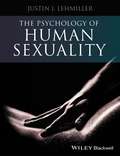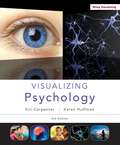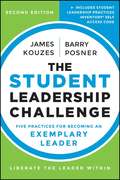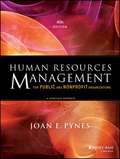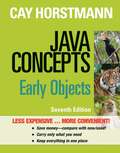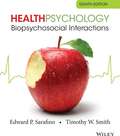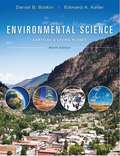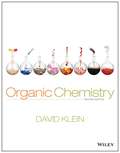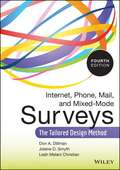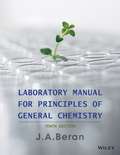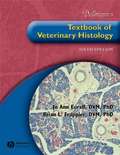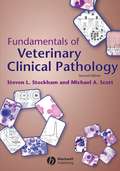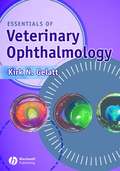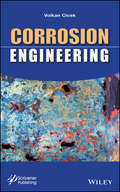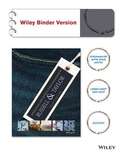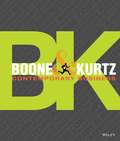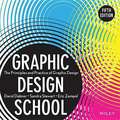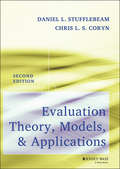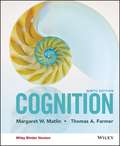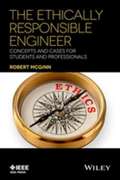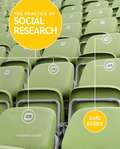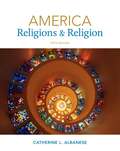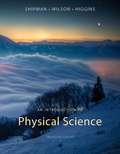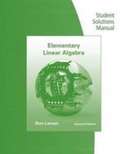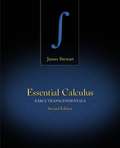- Table View
- List View
The Psychology of Human Sexuality
by Justin J. LehmillerThis book offers a comprehensive overview of human sexual behavior from a biopsychosocial perspective.
Visualizing Psychology, 3rd Edition
by Siri Carpenter Karen HuffmanVisualizing Psychology 3rd Edition helps students examine their own personal studying and learning styles with several new pedagogical aids--encouraging students to apply what they are learning to their everyday lives while offering ongoing study tips and psychological techniques for mastering the material. Most importantly, students are provided with numerous opportunities to immediately access their understanding.
The Student Leadership Challenge: Five Practices For Becoming an Exemplary Leader (Second Edition)
by James M. Kouzes Barry Z. PosnerIn this updated and expanded second edition of The Student Leadership Challenge, James Kouzes and Barry Posner apply their extensive research and expertise to demonstrate that anyone can be a leader, regardless of age or experience. They challenge high school and undergraduate college students to examine their leadership actions and aspirations. Your students will learn from first-hand leadership stories from young leaders like themselves around the world, helping them to deeply understand and explore The Five Practices of Exemplary Leadership: Model the Way Inspire a Shared Vision Challenge the Process Enable Others to Act Encourage the Heart The book guides students through the concrete actions they can take to become exemplary leaders, from finding their voice and clarifying their values, to recognizing others' contributions and celebrating others' victories. The authors ask readers to reflect at the end of each chapter on their own leadership experiences and abilities now and for the future.
Human Resources Management For Public And Nonprofit Organizations: A Strategic Approach
by Joan E. PynesSince the first edition was published in 1997, Human Resources Management for Public and Nonprofit Organizations has become the go-to reference for public and nonprofit human resources professionals. Now in its fourth edition, the text has been significantly revised and updated to include information that reflects changes in the field due to the economic crisis, changes in federal employment laws, how shifting demographics affect human resources management, the increased use of technology in human resources management practices, how social media has become embedded in the workplace, and new approaches to HRM policy and practice. Written by Joan E. Pynes--a noted expert in public administration--this authoritative work shows how strategic human resources management is essential for managing change in an increasingly complex environment. The book Includes new material on workplace violence and employee discipline.
Java Concepts (Seventh Edition)
by Cay S. HorstmannCay Horstmann's seventh edition of Java Concepts provides an approachable introduction to fundamental programming techniques and design skills, helping students master basic concepts and become competent coders. Major rewrites and an updated visual design make this student-friendly text even more engaging. The text is known for its realistic programming examples, great quantity and variety of homework assignments, and lab exercises that build student problem-solving abilities. The seventh edition now includes problem solving sections, more example code online, and exercises from Science and Business.
Health Psychology: Biopsychosocial Interactions (8th Edition)
by Edward P. Sarafino Timothy W. SmithSarafino draws from the research and theory of many disciplines in order to show psychologists how psychology and health affect each other.
Environmental Science: Earth as a Living Planet (Ninth Edition)
by Daniel B. BotkinEnvironmental Science: Earth as a Living Planet, Ninth Edition provides emphasis on the scientific process throughout the book and gives readers the structure to develop their critical thinking skills. Updated and revised to include the latest research in the field, the 9th edition continues to present a balanced analytical and interdisciplinary approach to the field.
Organic Chemistry
by David KleinThe textbook includes important concepts in Organic chemistry, complete with conceptual checkpoints that promote mastery of the concepts, and special emphasis is placed on skills development through Skill Builders to support these concepts.
Internet, Phone, Mail, and Mixed-Mode Surveys: The Tailored Design Method (Fourth Edition)
by Don A. Dillman Leah Melani Christian Jolene D. SmythThe classic survey design reference, updated for the digital age For over two decades, Dillman's classic text on survey design has aided both students and professionals in effectively planning and conducting mail, telephone, and, more recently, Internet surveys. The new edition is thoroughly updated and revised, and covers all aspects of survey research. It features expanded coverage of mobile phones, tablets, and the use of do-it-yourself surveys, and Dillman's unique Tailored Design Method is also thoroughly explained. This invaluable resource is crucial for any researcher seeking to increase response rates and obtain high-quality feedback from survey questions. Consistent with current emphasis on the visual and aural, the new edition is complemented by copious examples within the text and accompanying website. This heavily revised Fourth Edition includes: Strategies and tactics for determining the needs of a given survey, how to design it, and how to effectively administer it How and when to use mail, telephone, and Internet surveys to maximum advantage Proven techniques to increase response rates Guidance on how to obtain high-quality feedback from mail,electronic, and other self-administered surveys Direction on how to construct effective questionnaires,including considerations of layout The effects of sponsorship on the response rates of surveys Use of capabilities provided by newly mass-used media:interactivity, presentation of aural and visual stimuli. The Fourth Edition reintroduces the telephone-including coordinating land and mobile. Grounded in the best research, the book offers practical how-to guidelines and detailed examples for practitioners and students alike.
Laboratory Manual for Principles of General Chemistry (Tenth Edition)
by Jo Allan BeranPre-laboratory Assignment Questions emphasize the chemical principles presented in the introduction of the experiment. Representative calculations, data analysis, and points of emphasis required for the completion of the Experimental Procedure are also addressed in the Pre-laboratory Assignment. ?h Laboratory Questions help promote a deeper understanding of the experiment and help students recognize where chemical principles can be used for interpreting unexpected data or ?turning points? in the experiment. In-depth discussion of lab techniques and easy-to-reference techniques icons: Lab techniques are covered in the front of the manual and are assigned an icon. The icons are placed in the margin of the text at the appropriate point at which to use the technique. ?h Safety and Disposal Icons: Icons contained in the Experimental Procedures indicate safety cautions and provide information regarding the correct disposal of test solutions. Strong coverage/emphasis on safety. Illustrations and clear procedures make it a good reference for students. Offers Dry Labs that can be done outside the lab setting. Offers easy custom pub options. Extensive background information offered within each lab. Can be used with any text.
Dellmann's Textbook of Veterinary Histology (Sixth Edition)
by Jo Ann Eurell Brian L. Frappier DvmThe leading veterinary histology text returns with a fully updated sixth edition. Written in a concise, easy-to-understand that's a pleasure to read, this new edition continues the student-friendly tradition originated by Dr. Dellman, presenting the basics of histology including cytology and microscopic anatomy.The Sixth Edition focuses on the most current knowledge of cell, tissue and organ structure and function. All information has been fully revised and updated by the authors, both experts in their fields. Written with first year veterinary students in mind, it is also an important resource for veterinarians, graduate students, and others who require information on animal tissue structure and function.Highlights of the Sixth Edition include:An interactive CD-ROM histology atlas, including more than 800 high-quality color images, each accompanied by identifying labels and descriptive legends.New images and line drawings have been added to enhance the student's understanding of concepts.Two-page insert contains full-color histology images.Comprehensive listings of suggested readings at the end of each chapter encourage further study.The text is organized by body region, allowing the presentation to emphasize comparative species information so students can better appreciate how species differ in regard to key structures.Whether you're a veterinary student or practicing professional, you should have this classic histology reference as part of your working library.Includes FREE CD-ROM histology atlas with 800+ images!
Fundamentals of Veterinary Clinical Pathology (Second Edition)
by Steven L. Stockham Michael A. ScottThis book provides in-depth information about common clinical laboratory assays that are used to evaluate domestic mammals, including what assays measure, sample or assay conditions that affect results, and what results indicate about the physiologic or pathologic state of a patient. Whenever possible, diseases and conditions are grouped by common mechanisms or processes to promote a conceptual understanding of laboratory data that can be generally applied across many species. New to the second edition are additional disorders, diagnostic tests, illustrations, images, references, and pathophysiologic explanations. This text has proven valuable to students and veterinarians wanting a fundamental understanding of veterinary clinical pathology.
Essentials of Veterinary Ophthalmology (Second Edition)
by Kirk N. GelattNow in its second edition, Essentials of Veterinary Ophthalmology provides its readers with a practical introduction to the diagnosis and clinical management of the most frequently encountered eye diseases of domestic animals. Essentials of Veterinary Ophthalmology is distilled from the authoritative, two-volume, fourth edition of Veterinary Ophthalmology (Gelatt), drawing primarily on the clinically relevant sections to provide expert coverage in a more concise and quick-reference format - ideal for busy small animal or equine practitioners seeking rapid advice for a patient. The second edition includes more images, algorithms to speed the clinical problem-solving process, key points highlighted in bold, expanded appendices for convenient reference to therapeutic agents, recommended dosages, and possible side effects, and a brief glossary.Practical and accessible, the second edition of Essentials of Veterinary Ophthalmology is filled with reader-friendly features to provide veterinary students and practitioners with an indispensable resource for the fundamentals of clinical veterinary ophthalmology.* Focuses on the most common eye diseases of small animals and horses* Provides expert coverage in a concise, quick-reference format* New edition includes more images, algorithms, key points in bold, expanded appendices and glossary* Based on the two-volume definitive reference Veterinary Ophthalmology, 4th Edition (Gelatt)
Corrosion Engineering
by Volkan CicekCorrosion costs billions of dollars to each and every single economy in the world. Corrosion is a chemical process, and it is crucial to understand the dynamics from a chemical perspective before proceeding with analyses, designs and solutions from an engineering aspect. The opposite is also true in the sense that scientists should take into consideration the contemporary aspects of the issue as it relates to the daily life before proceeding with specifically designed theoretical solutions. Corrosion Engineering is advised to both theoreticians and practitioners of corrosion alike.Corrosion engineering is a joint discipline associated primarily with major engineering sciences such as chemical engineering, civil engineering, petroleum engineering, mechanical engineering, metallurgical engineering, mining engineering among others and major fundamental sciences such as sub-disciplines of physical, inorganic and analytical chemistry as well as physics and biology, such as electrochemistry, surface chemistry, surface physics, solution chemistry, solid state chemistry and solid state physics, microbiology, and others.Corrosion Engineering is a must-have reference book for the engineer in the field that covers the corrosion process with its contemporary aspects with respect to both of its scientific and engineering aspects. It is also a valuable textbook that could be used in an engineering or scientific course on corrosion at the university level.
Operations and Supply Chain Management
by Roberta S. Russell Bernard W. TaylorRussell and Taylor's Operations and Supply Chain Management, 8th Edition is designed to teach students how to analyze processes, ensure quality, create value, and manage the flow of information and products, while creating value along the supply chain in a global environment. Russell and Taylor explain and clearly demonstrate the skills needed to be a successful operations manager. Most importantly, Operations Management 8e makes the quantitative topics easy for students to understand and the mathematical applications less intimidating.
Boone & Kurtz's Contemporary Business Sixteenth Edition
by David L. KurtzBoone and Kurtz, Contemporary Business 16th Edition, delivers solutions at the speed of business to stimulate curiosity, show relevance, promote creativity and prepare students for what’s ahead, in their academic and business careers. With thoroughly revised cases, fresh, current examples, and an updated video series, the 16th Edition provides insights into the many facets of business that contribute to the dynamic, ever changing world of work.
Graphic Design School (Fifth Edition)
by Sandra Stewart Eric Zempol David DabnerGraphic Design School allows students to develop core competencies while understanding how these fundamentals translate into new and evolving media. With examples from magazines, websites, books, and mobile devices, the Fifth Edition provides an overview of the visual communications profession, with a new focus on the intersection of design specialties. A brand-new section on web and interactivity covers topics such as web tools, coding requirements, information architecture, web design and layout, mobile device composition, app design, CMS, designing for social media, and SEO.
Evaluation Theory, Models, and Applications (Second Edition)
by Chris L. Coryn Daniel L. StufflebeamThe golden standard evaluation reference text Now in its second edition, Evaluation Theory, Models, and Applications is the vital text on evaluation models, perfect for classroom use as a textbook, and as a professional evaluation reference. The book begins with an overview of the evaluation field and program evaluation standards, and proceeds to cover the most widely used evaluation approaches. With new evaluation designs and the inclusion of the latest literature from the field, this Second Edition is an essential update for professionals and students who want to stay current. Understanding and choosing evaluation approaches is critical to many professions, and Evaluation Theory, Models, and Applications, Second Edition is the benchmark evaluation guide. Authors Daniel L. Stufflebeam and Chris L. S. Coryn, widely considered experts in the evaluation field, introduce and describe 23 program evaluation approaches, including, new to this edition, transformative evaluation, participatory evaluation, consumer feedback, and meta-analysis. Evaluation Theory, Models, and Applications, Second Edition facilitates the process of planning, conducting, and assessing program evaluations. The highlighted evaluation approaches include: Experimental and quasi-experimental design evaluations Daniel L. Stufflebeam's CIPP Model Michael Scriven's Consumer-Oriented Evaluation Michael Patton's Utilization-Focused Evaluation Robert Stake's Responsive/Stakeholder-Centered Evaluation Case Study Evaluation Key readings listed at the end of each chapter direct readers to the most important references for each topic. Learning objectives, review questions, student exercises, and instructor support materials complete the collection of tools. Choosing from evaluation approaches can be an overwhelming process, but Evaluation Theory, Models, and Applications, Second Edition updates the core evaluation concepts with the latest research, making this complex field accessible in just one book.
Cognition
by Margaret W. Matlin Thomas A. FarmerMargaret Matlin and new co-author Thomas Farmer's Cognition demonstrates how cognitive processes are relevant to everyday, real-world experiences, and frequently examines how cognition can be applied to other disciplines such as clinical psychology, social psychology, consumer psychology, education, communication, business, medicine, and law. The 9th edition continues to relate cognitive topics to applications in everyday life. This edition is fully updated with research and additional anecdotes. It also includes more research on neuroscience.
The Ethically Responsible Engineer: Concepts and Cases for Students and Professionals
by Robert McginnThe book lays out and discusses four Fundamental Ethical Responsibilities of Engineers (FEREs) that are incumbent of engineers. It also shows how the FEREs can be applied to particular engineering situations to determine specific "derivative ethical responsibilities" that are incumbent on engineers in those situations Includes a variety of case studies in various fields of engineering that are divided into four parts: salient factual background, ethical issues, analysis of ethical issues, and moral lessons Grasp ethical issues in real-life situations The author is a professor of Management Science and Engineering and Science, Technology, and Society (STS) at Stanford University
The Practice of Social Research (Thirteenth Edition)
by Earl R. BabbieA straightforward, comprehensive, and approachable guide to research as practiced by social scientists, the Thirteenth Edition of Babbie's 'gold-standard' text gives you the tools you need to apply research concepts practically, as both a researcher and a consumer. Babbie emphasizes the process by showing you how to design and construct projects, introducing the various observation modes in use today, and answering critical questions about research methods--such as how to conduct online surveys and analyze both qualitative and quantitative data.
America: Religions and Religion (5th Edition)
by Catherine L. AlbaneseAlbanese (emerita, comparative religions, U. of California--Santa Barbara) introduces students to the variety of religions in the US, and to the theories and practices of studying religion. She considerably shortened and revised the 2007 fourth edition to account for changes in classes and students, and for this fifth takes account of changes in the religious landscape since then--including findings from the 2010 census. She covers the original cast, new-made in America, patterns of expansion and contraction, and American religion and American identity. Among specific topics are tradition and change among Native Americans, the presence of Roman Catholicism, the protestant churches and the mission mind, African American religion and nationhood, 19th-century new religions, Eastern peoples and Eastern religions, and many centers meeting.
An Introduction to Physical Science (13th Edition)
by James Shipman Jerry D. Wilson Aaron Todd Charles A. HigginsConsistent with previous editions of An Introduction to Physical Science, the goal of the new Thirteenth edition is to stimulate students' interest in and gain knowledge of the physical sciences. Presenting content in such a way that students develop the critical reasoning and problem-solving skills that are needed in an ever-changing technological world, the authors emphasize fundamental concepts as they progress through the five divisions of physical sciences: physics, chemistry, astronomy, meteorology, and geology. Ideal for a non-science majors course, topics are treated both descriptively and quantitatively, providing instructors the flexibility to emphasize an approach that works best for their students.
Student Solutions Manual:Elementary Linear Algebra, Seventh Edition
by Ron LarsonThis Student Solutions Manual can be used as a supplement to Elementary Linear Algebra, Seventh Edition, by Ron Larson. All references to chapters, theorems, and exercises relate to the main text. Solutions to every odd-numbered exercise in the text are given with all essential algebraic steps included.
Essential Calculus: Early Transcendentals
by James StewartThis book is for instructors who think that most calculus textbooks are too long. In writing the book, James Stewart asked himself: What is essential for a three-semester calculus course for scientists and engineers? ESSENTIAL CALCULUS: EARLY TRANSCENDENTALS, Second Edition, offers a concise approach to teaching calculus that focuses on major concepts, and supports those concepts with precise definitions, patient explanations, and carefully graded problems. The book is only 900 pages--two-thirds the size of Stewart's other calculus texts, and yet it contains almost all of the same topics.
